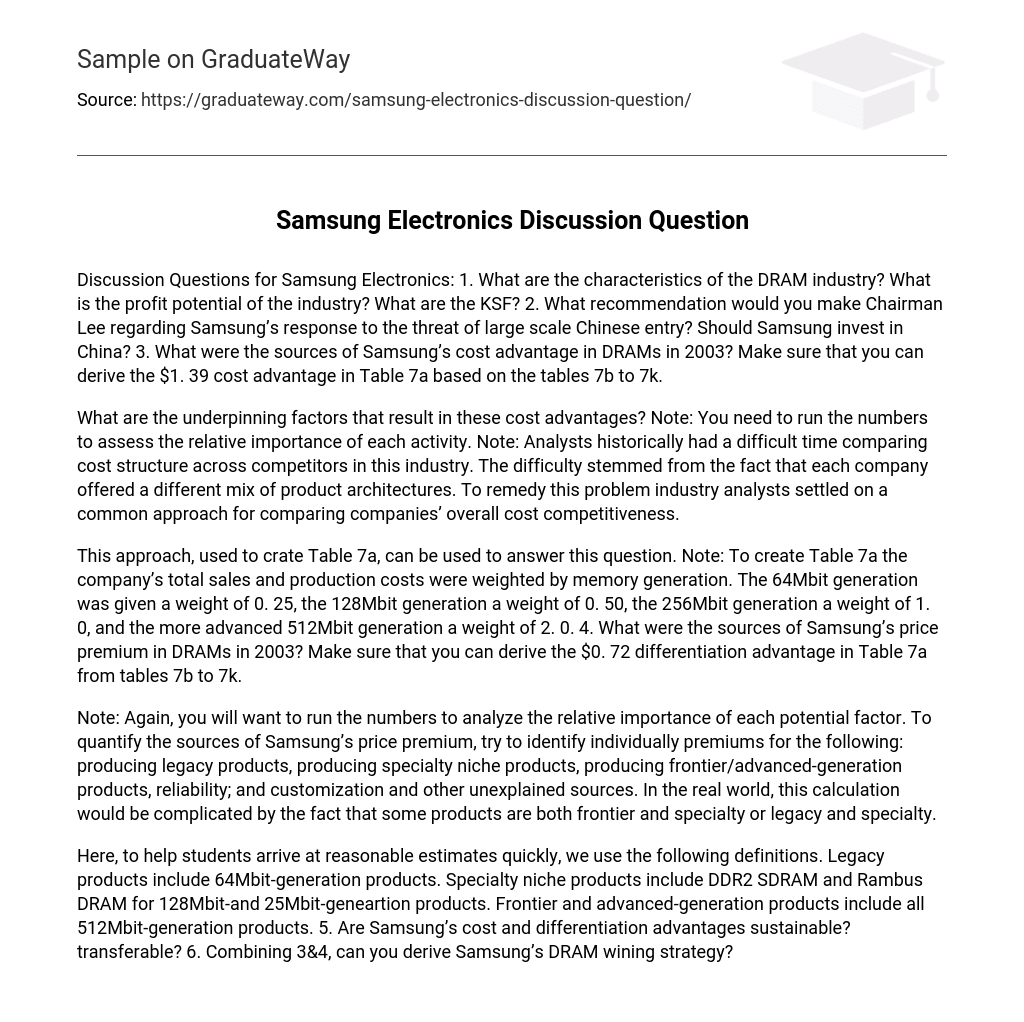Discussion Questions for Samsung Electronics: 1. What are the characteristics of the DRAM industry? What is the profit potential of the industry? What are the KSF?
2. What recommendation would you make Chairman Lee regarding Samsung’s response to the threat of large scale Chinese entry? Should Samsung invest in China?
3. What were the sources of Samsung’s cost advantage in DRAMs in 2003? Make sure that you can derive the $1.39 cost advantage in Table 7a based on tables 7b to 7k.
One must analyze the numbers to determine the relative importance of each activity in order to identify the factors that contribute to these cost advantages. Previously, comparing cost structures among competitors in this industry was challenging due to each company having a distinct product architecture combination. To overcome this problem, industry analysts have implemented a standardized approach for evaluating overall cost competitiveness.
This method was utilized to create Table 7a, which can be used to answer the mentioned question. It is important to note that in order to create Table 7a, the company’s total sales and production costs were adjusted based on the memory generation. Specifically, the 64Mbit generation was given a weight of 0.25, the 128Mbit generation a weight of 0.50, the 256Mbit generation a weight of 1.0, and the more advanced 512Mbit generation a weight of 2.0. The objective is to determine the sources of Samsung’s price premium in DRAMs in 2003. It is crucial to derive the $0.72 differentiation advantage in Table 7a from tables 7b to 7k.
Note: The numbers should be evaluated to determine the significance of each potential factor. To measure the reasons why Samsung’s prices are higher, it is recommended to separately determine premiums for producing legacy products, producing specialty niche products, producing frontier/advanced-generation products, reliability, and customization and other unknown sources. However, in reality, this calculation can be complex because certain products may fall under multiple categories such as being both frontier and specialty or legacy and specialty.
Here are the definitions we use to help students make quick estimates. Legacy products refer to products from the 64Mbit generation. Specialty niche products include DDR2 SDRAM and Rambus DRAM for the 128Mbit and 25Mbit generations. Frontier and advanced-generation products encompass all 512Mbit generation products. Can Samsung’s cost and differentiation advantages be sustained? Can they be transferred? By combining points 3 and 4, can you determine Samsung’s winning strategy in the DRAM market?





